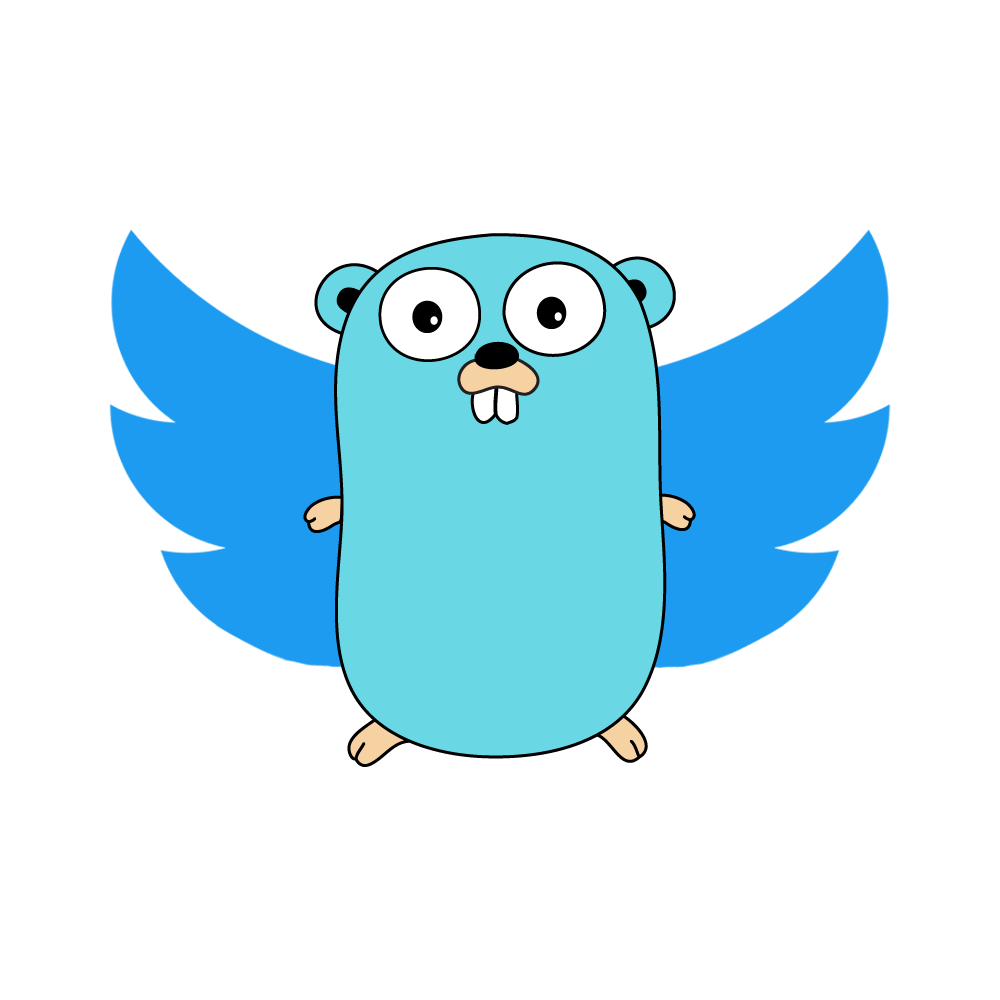Currently we only support twitter api v2, but version 1.1 will be added soon.
Caution! we are still in Beta phase.
go get github.com/arshamalh/twigoEasily make a new client!
package main
import "github.com/arshamalh/twigo"
twigo.NewClient((&twigo.Config{
ConsumerKey: "ConsumerKey",
ConsumerSecret: "ConsumerSecret",
AccessToken: "AccessToken",
AccessSecret: "AccessTokenSecret",
// Both of "bearer token" or "four other keys (ConsumerKey, ...)" is not mandatory.
// We'll find bearer token automatically if it's not specified.
// Also, you can use twigo.utils.BearerFinder() function.
BearerToken: "BearerToken",
}))And use any function you need, for example, get a tweet like this:
response, _ := client.GetTweet(tweet_id, nil)
fmt.Printf("%#v\n", response)
tweet := response.DataMaking a tweet, as easy as below:
client.CreateTweet("This is a test tweet", nil)Retweeting and Liking a tweet:
client.Retweet("1516784368601153548")
client.Like("1431751228145426438")Or Maybe deleting your like and retweet:
client.UnRetweet("1516784368601153548")
client.Unlike("1516784368601153548")Simple, right?
How many actions can we do?
You can simpy read RateLimits attribute on the Response!
RateLimits:{
Limit:75 // An static number depending on the endpoint that you are calling or your authentication method.
Remaining:74 // An dynamic method that decreases after each call, and will reset every once in a while.
ResetTimestamp:1650553033 // Reset (charge up) remaining calls in this timestamp.
}Passing some extra fields and params:
fields := twigo.Map{"tweet.fields": []string{"author_id", "created_at", "public_metrics"}}
response, _ := client.GetTweet(tweet_id, fields)
fmt.Printf("%#v\n", response)
tweet := response.DataIf the tweet doesn't exist or it's from a suspended account, twigo will return an empty struct instead, You should get tweet.ID and see if it's a "" or not.
&twigo.TweetResponse{
Data: twigo.Tweet{
ID:"",
Text:"",
PublicMetrics:map[string]int(nil)
// Other fields
},
Meta: twigo.MetaEntity{
ResultCount:0,
NextToken:""
// Other fields
},
RateLimits: twigo.RateLimits{
Limit:300,
Remaining:294,
ResetTimestamp:1651585436
}
}You can get Liking users: (users who liked a tweet)
response, err := client.GetLikingUsers(
"1431751228145426438",
twigo.Map{
"max_results": 5,
})
if err != nil {
fmt.Println(err)
}
fmt.Printf("%+v\n", response)And result will be a Go struct like this:
{
Data:[
{
ID:1506623384850948096
Name:Rhea Baker
Username:RheaBak16183941
Verified:false
} {
ID:1506621280098869252
Name:Janice Lane
Username:JaniceL44359093
Verified:false
}
// And more...
]
Includes: // Some structs, read more on docs...
Errors:[]
Meta:{
ResultCount:5
NextToken:7140dibdnow9c7btw480y5xgmlpwtbsh4fyqnqmwz9k4w
// And more...
}
RateLimits:{
Limit:75
Remaining:74
ResetTimestamp:1650553033
}
}You can get some users by their username or by their IDs:
response, err := client.GetUsersByUsernames(
[]string{"arshamalh", "elonmusk", "someone_else"},
nil, // There is no param in this example.
)Return all tweets a user have written in the last 30 minutes.
start_time := time.Now().UTC().Add(-30 * time.Minute)
params := twigo.Map{"max_results": 5, "start_time": start_time}
user_tweets, _ := bot.GetUserTweets(user_id, params)
if len(user_tweets.Data) != 0 {
fmt.Printf("<<Some tweets found>>")
for _, tweet := range user_tweets.Data {
fmt.Printf("%#v\n", tweet)
}
}if your method is paginatable, you can paginate using NextPage method attached to the response, like this:
response, _ := client.GetUserTweets("1216345203453452289", nil)
for {
fmt.Printf("%#v\n", response)
response, err = response.NextPage() // Here the magic happens! NextPage method attached to response
if err != nil { // Break the loop whenever there is no more pages.
fmt.Println(err)
break
}
}A little bit more complex example:
response, err := client.GetUserTweets("1216345203453452289", nil)
if err != nil { // Is there any response at all?
fmt.Println(err)
} else {
page_number := 1 // To keep track of page number.
for {
fmt.Printf("Page %d: %#v\n", page_number, response)
response, err = response.NextPage()
if err != nil {
fmt.Println(err)
break
}
// If rate limits exceeds, wait until it charges again,
// it's not a good approach, because all of your app will sleep,
// it's highly recommended to do it in a goroutine instead.
if response.RateLimits.Remaining == 0 {
fmt.Println("Rate limit reached")
sleeping_duration := time.Until(time.Unix(response.RateLimits.ResetTimestamp, 0))
time.Sleep(sleeping_duration)
}
page_number++
}
}Feel free to open an issue, contribute and contact us!
